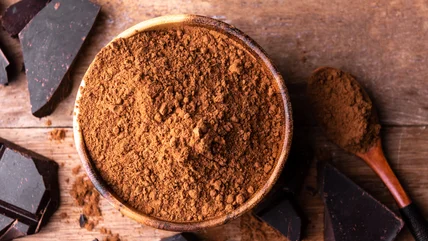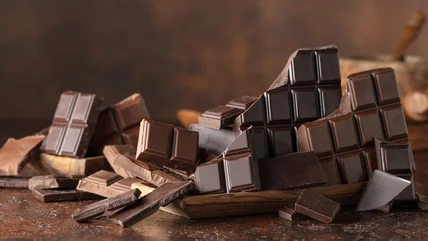For many years, chocolate has been a staple in our diets, whether it is for celebration or stress relief. Its flavor profile varies from milk chocolate’s smooth creaminess to dark chocolate’s sharp bite. Regardless of your preference, both contain caffeine, the preferred stimulant in America. Additionally, one chocolate has a lot more than the other.
The cocoa bean, which is harvested from the cocoa pods of the cocoa tree, is the source of cocoa, the basic ingredient in everything chocolate. Caffeine is naturally present in the fruit; up to 200 milligrams, or roughly two cups of coffee, can be found in one cup of unsweetened cacao powder. However, following the chocolate-making process, which liquefies the beans to produce cocoa solids and cocoa butter, that number rapidly decreases to minuscule amounts, ranging from 2 to 35 milligrams per serving. There are more cocoa solids in darker chocolate, which increases its bitterness and caffeine content. Actually, the amount of caffeine in dark chocolate can range from two to thirteen times that of milk chocolate.
Caffeine in cocoa with a hidden benefit

When chocolate is being made, the amount of caffeine in it drastically drops. However, there are still 35–200 mg of caffeine per 50 grams of dark chocolate. This broad range is contingent upon the quantity of cocoa solids utilized. For comparison, the cocoa solids content of dark chocolate usually ranges from 50 to 90 percent.
Another stimulant in the cocoa bean is theobromine, which has a milder stimulating effect; like caffeine, it is concentrated in dark chocolate due to cocoa solids and may offer some health benefits. Studies indicate that it could contribute to a healthy immune system response, improved cognitive functioning, joint health, and treatment of diseases involving the brain such as depression or Alzheimer\’s.
Milk’s harmonious blend with cocoa

And even if you manage to get a cup of coffee in your hot chocolate, the addition of milk further dilutes it, exchanging bitter for sweet (milk chocolate has only 14 milligrams per 50 grams after the process). To be labeled “milk chocolate,” this delectable treat must contain no less than 12 percent of liquid or fat and/or powdered milk solids, reducing the percentage of caffeine-containing cocoa solids. For that reason, milk chocolate contains only between 10 and 50 percent cocoa (much lower than in dark chocolate).
However, most milk chocolate also has other ingredients such as sugar added in order to dull the bitterness of the cocoa even more. White chocolate, which consists of cocoa butter, milk, and sugar but no cocoa solids, contains none at all due to its lack of cocoa solids. Whether you want intense flavor or just a hint of sweetness, knowing about cocoa is vital when learning everything about baking with chocolate.
